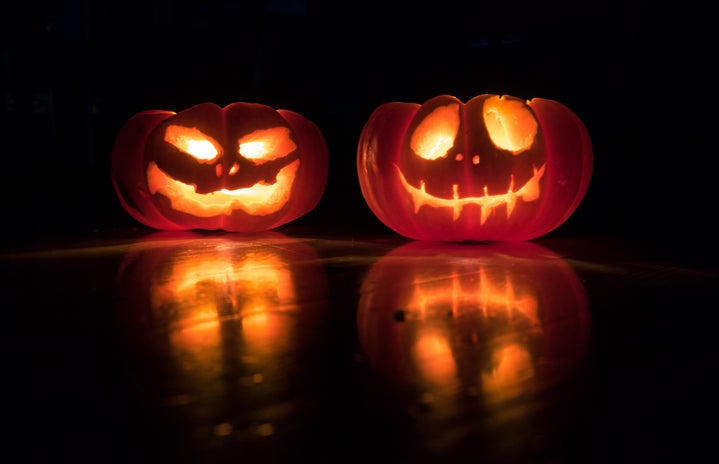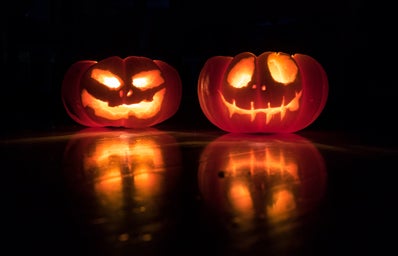Halloween, or All Hallows Eve as it was originally known, dates back more than 2000 years ago. Halloween is on October 31st, which is the last day of the Celtic calendar. Halloween also is a Pagan holiday to worship the dead. In an attempt to convert Pagans to Christianity, Catholics put All Saints Day on the day after All Hallows Eve. Celts believed that on the night of All Hallows Eve all the souls of the dead would roam the streets. They also believed that not all souls of the dead were friendly so they would leave gifts or treats to appease them, this led to now-a-day trick-or-treating. Samhain, also celebrated on October 31st, is the ‘end of harvest’ festival, which is celebrated by many cultures such as Wiccans, Geals and Pagans. For Celts, however, Samhain marks the ‘summer’s end’ because All Hallows Eve was the end of the celtic calendar.
Celebrations for Samhain are less about the souls of the dead and more about celebration of Harvest and the end of said harvest and, for the Celts, the year. To celebrate, people would collect remaining crops and kill livestock. They would also burn bonfires, wear animal pelts or saint costumes to hide from evil souls, and hollow out gourds to make outside lanterns. All of which are celebrated today, just in more modern techniques. Having bonfires, dressing in costumes and carving pumpkins are all still Halloween traditions today. Today’s celebrations are for fun and candy while the past Samhain and All Hallows Eve celebrations where for religion and protection. The name ‘Halloween’ comes from All Hallows Evening, in fact Halloween is supposed to be written as Hallowe’en for the connection of Hallows and Even.
Fear is also circled around All Hallows Eve because people connect it to evil witches, the Anti-Christ, and Satanism. There are legends about witch covens gathering on Samhain/All Hallows Eve. They were said to ride on broomsticks and would dance around a bonfire as a ritual for the devil. All Hallows Eve was also said to also provide the most accurate and powerful spells and potions for witches. The Catholic Church and the Vatican feared all the celebration behind Halloween was causing worship to the dead instead of Christian customs. In the 1800s, the trick half of trick-or-treating started with egging houses and opening farm’s livestock gates. However, during the 1920s to 1930s the tricking started to resemble more of a crazy block party and acts of vandalism. This led to town leaders to start encouraging costumes and trick-or-treating as a fun pastime for kids.
Halloween today is about being ‘spooky’ and having fun. While it’s not a public holiday, meaning businesses and schools do not close for it, Halloween is the 2nd most celebrated holiday in the United States. The history behind it is fascinating and has caused many of the Halloween activities of today. Symbols of ghosts, witches, carved pumpkins and death all come from the All Hallows Eve and Samhain. Of course other ghouls and monsters were created over time and were added to Halloween stories since Halloween became all about scares and spooks. Wiccan and Pagan cultures are still present in the modern day and still celebrate Samhain as the final harvest of the year. For Wiccans who participate in witchcraft Samhain brings very prosperous and strong spells, potions and rituals. Overall celebrating Halloween, Samhain and/or All Hallows Eve works differently from person to person. It’s a time when the plane between the living and the dead is thinned and harvest is ending, so celebrate either way and enjoy a Happy Halloween.


